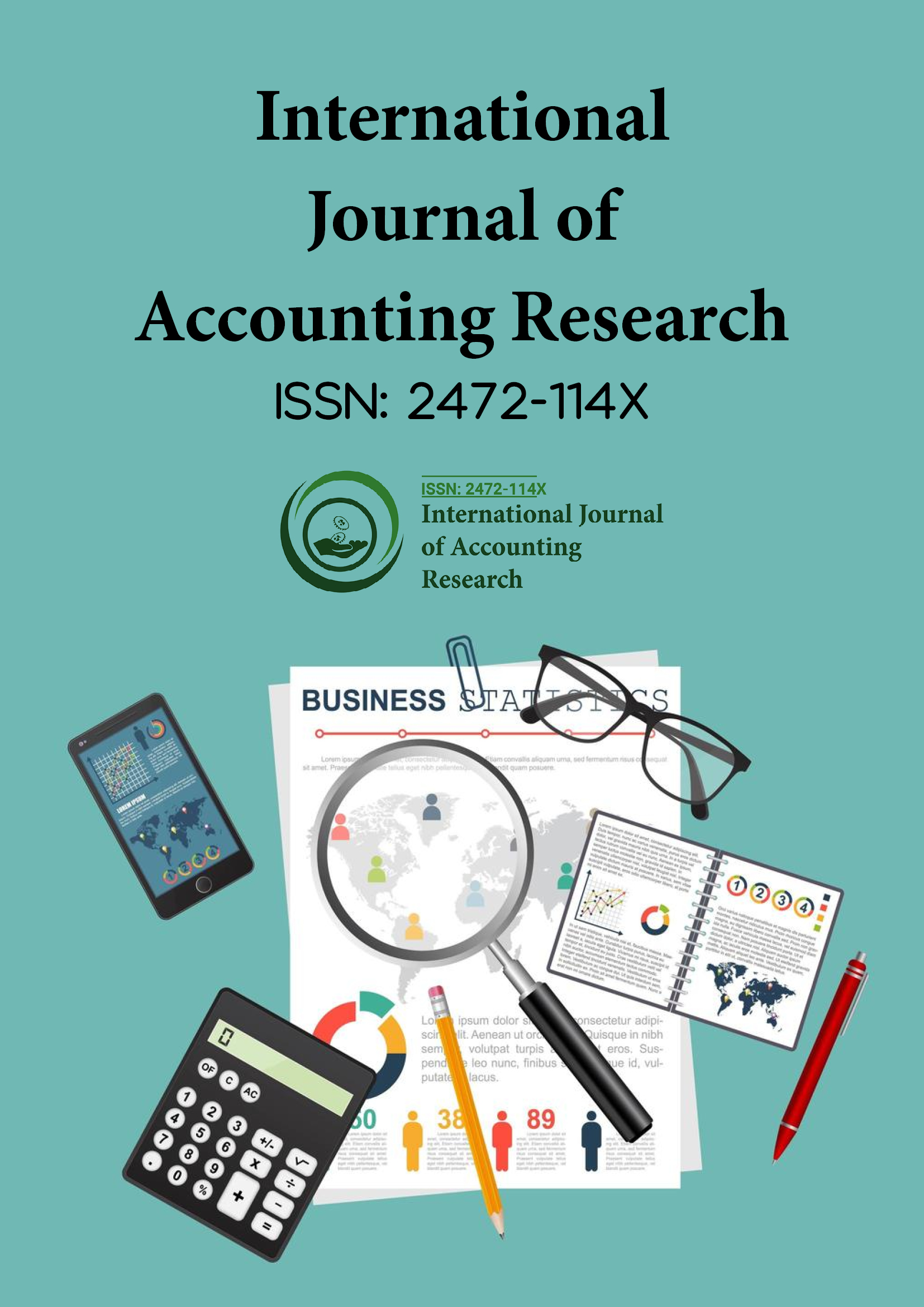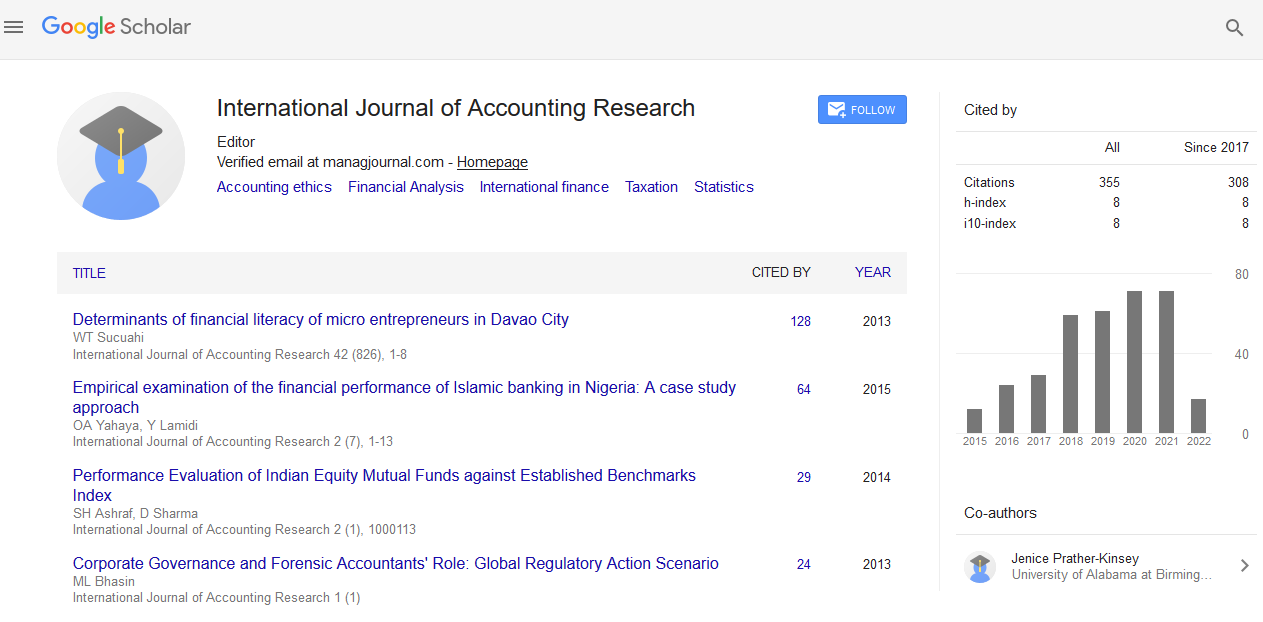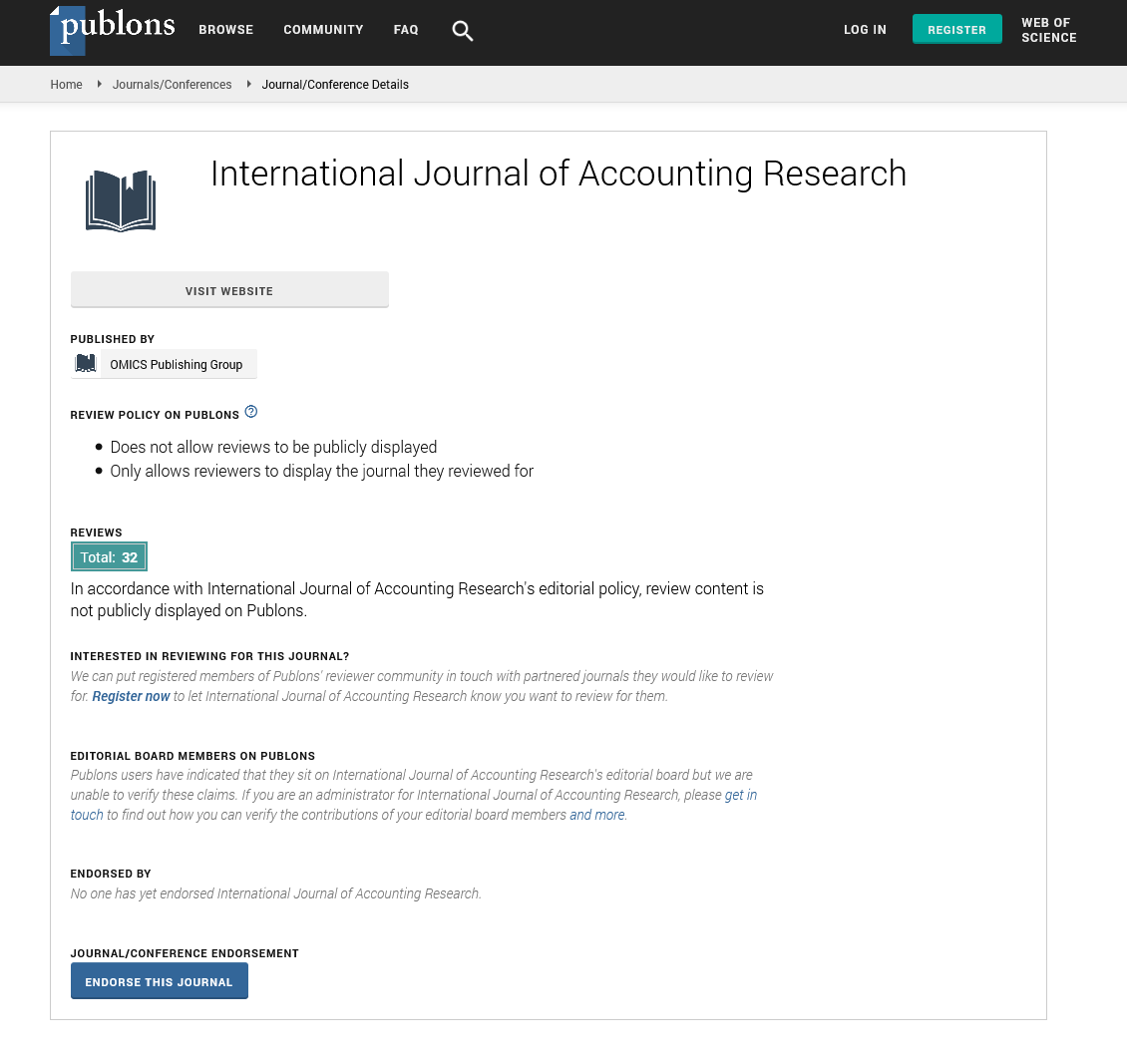Indexed In
- Open J Gate
- RefSeek
- Hamdard University
- EBSCO A-Z
- Scholarsteer
- Publons
- Euro Pub
- Google Scholar
Useful Links
Share This Page
Journal Flyer

Open Access Journals
- Agri and Aquaculture
- Biochemistry
- Bioinformatics & Systems Biology
- Business & Management
- Chemistry
- Clinical Sciences
- Engineering
- Food & Nutrition
- General Science
- Genetics & Molecular Biology
- Immunology & Microbiology
- Medical Sciences
- Neuroscience & Psychology
- Nursing & Health Care
- Pharmaceutical Sciences
Opinion Article - (2023) Volume 11, Issue 2
The Advantages of a Fusion Model Based on Neural Networks in Accounting
Biaowen Wei*Received: 28-Mar-2023, Manuscript No. IJAR-23-21406; Editor assigned: 31-Mar-2023, Pre QC No. IJAR-23-21406 (PQ); Reviewed: 14-Apr-2023, QC No. IJAR-23-21406; Revised: 21-Apr-2023, Manuscript No. IJAR-23-21406 (R); Published: 28-Apr-2023, DOI: 10.35248/2472-114X.23.11.327
Description
In today's dynamic business environment, organizations face the challenge of integrating financial accounting and management accounting systems to achieve better decision-making and performance evaluation. Traditional accounting systems often operate in silos, resulting in fragmented information and suboptimal outcomes. However, the emergence of neural networks and Artificial Intelligence (AI) techniques has opened up new possibilities for creating a fusion model that combines the strengths of financial accounting and management accounting. This article explores the potential of a fusion model based on neural networks and its implications for improving organizational decision-making.
Understanding financial accounting and management accounting
Financial accounting focuses on capturing and reporting an organization's financial transactions and preparing financial statements for external stakeholders. It follows established accounting principles and standards to ensure accurate and reliable financial information. On the other hand, management accounting provides information to internal stakeholders, such as managers and executives, for planning, control, and decisionmaking purposes. Management accounting is more flexible and subjective, allowing for the customization of reports to meet specific managerial needs.
The need for integration
The traditional separation between financial accounting and management accounting can lead to discrepancies in information, inconsistent reporting, and misaligned decisionmaking processes. This fragmentation hampers organizations' ability to fully grasp their financial position and make informed strategic choices. By integrating financial accounting and management accounting systems, organizations can bridge the gap between external reporting and internal decision-making, leading to more accurate and timely insights.
The role of neural networks
Neural networks are a subset of AI that mimic the human brain's ability to learn and adapt through experience. These networks consist of interconnected nodes, or artificial neurons, which process and analyses data to identify patterns and make predictions. Neural networks have demonstrated remarkable capabilities in various fields, including finance and accounting. By leveraging their ability to process vast amounts of data and identify complex relationships, neural networks can enhance the fusion model of financial accounting and management accounting.
Benefits of fusion model based on neural networks
Improved forecasting and planning: Neural networks can analyses historical financial data and external factors to predict future outcomes more accurately. By integrating financial and management accounting data, organizations can obtain a holistic view of their operations, enabling better forecasting and planning.
Real-time decision support: Traditional accounting systems often rely on historical data, which may not reflect the current business environment. Neural networks can analyses real-time data and provide timely insights for decision-making. For example, they can help identify cost-saving opportunities, optimize pricing strategies, or evaluate the financial impact of potential investments.
Enhanced risk management: The fusion model based on neural networks enables organizations to assess and mitigate risks more effectively. By combining financial data with non-financial indicators, such as customer satisfaction or employee productivity, neural networks can identify early warning signs and enable proactive risk management.
Integrated performance evaluation: Evaluating performance across various business units or departments can be challenging with separate accounting systems. The fusion model allows for a comprehensive evaluation by integrating financial and nonfinancial metrics. Neural networks can analyses the combined data to provide a more accurate assessment of performance, supporting effective resource allocation and incentive systems.
Enhanced compliance and reporting: Compliance with accounting standards and regulatory requirements is crucial for organizations. The fusion model can streamline the compliance process by integrating financial accounting rules and management accounting practices. Neural networks can help identify potential compliance issues and support the preparation of accurate and timely reports.
Conclusion
The fusion model of financial accounting and management accounting based on neural networks holds immense potential for organizations seeking to improve decision-making, performance evaluation, and strategic planning.
By integrating these traditionally separate disciplines, organizations can leverage the strengths of both systems to gain a more holistic understanding of their financial position and operational performance.
Neural networks provide the necessary computational power to process large datasets, identify patterns, and make predictions, enabling organizations.
Citation: Wei B (2023) The Advantages of a Fusion Model Based on Neural Networks in Accounting. Int J Account Res. 11:327.
Copyright: © 2023 Wei B. This is an open-access article distributed under the terms of the Creative Commons Attribution License, which permits unrestricted use, distribution and reproduction in any medium, provided the original author and source are credited.


